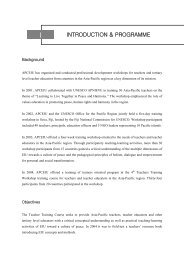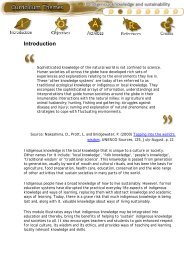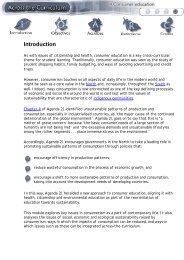REPORT OF UNESCO EXPERT MEETING ON - APCEIU
REPORT OF UNESCO EXPERT MEETING ON - APCEIU
REPORT OF UNESCO EXPERT MEETING ON - APCEIU
Create successful ePaper yourself
Turn your PDF publications into a flip-book with our unique Google optimized e-Paper software.
consequence, teachers as passive technicians are dis-empowered and come to have recourse to technocracy.<br />
While, in case of ESD, special focus is given to participatory learning, high-order thinking and action<br />
research which enable to promote bottom-up approach, quality focused, knowledge acquisition and its<br />
connection, construction of values and ethics, attitude change, life long learning through formal education<br />
(FE), non-formal education (NFE) and in-formal education (IFE). It also respects the accommodation to the<br />
evolving nature of concept of sustainability.<br />
By implementing with participatory learning, high-order thinking and action research, “teachers” (school<br />
teachers, non-formal mobile teachers, NGO facilitators) are able to take initiative in organising and<br />
improving their educational activities. Further, the “teachers” are expected to be learners as well as<br />
facilitators, and to share the learning opportunities and implement collective actions and decision making.<br />
In this approach, individual capacity (value, ethics, high-order thinking, attitude), institutional capacity<br />
(project management, institutional arrangement, e.g. partnership, networking and inter-linkages), civil<br />
capacity (participation and collective decision making), participatory teaching / learning methods and its<br />
process, decision making process and social support system, are the points to be considered for the<br />
promotion of quality education. The points described need to be inter-linked to the conventional points<br />
which encompass: content, teaching / learning methods and its process, teachers’ capacity, learning<br />
environment and its access.<br />
Figure 2: Historical Development of Environmental Education (Approaches)<br />
178








